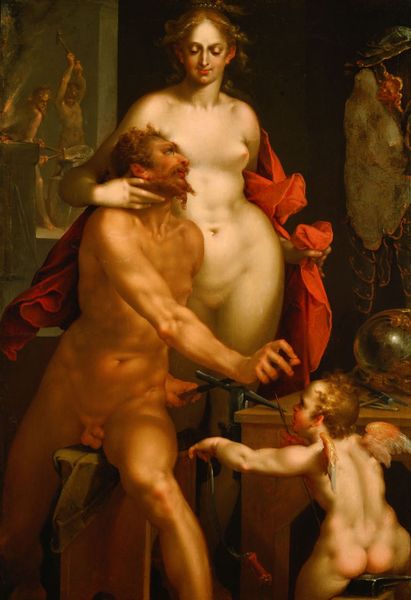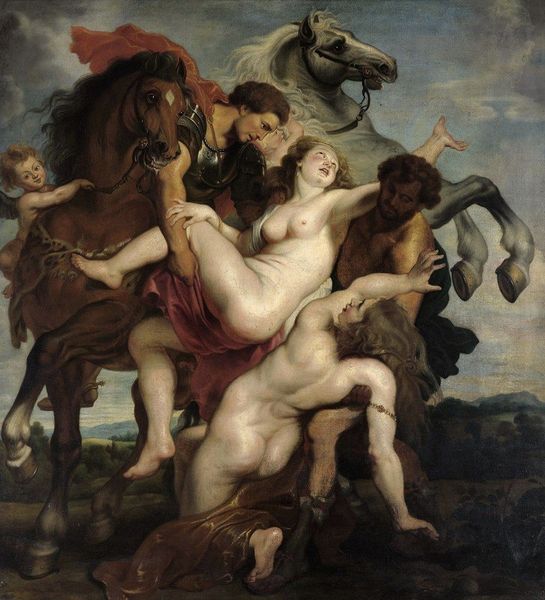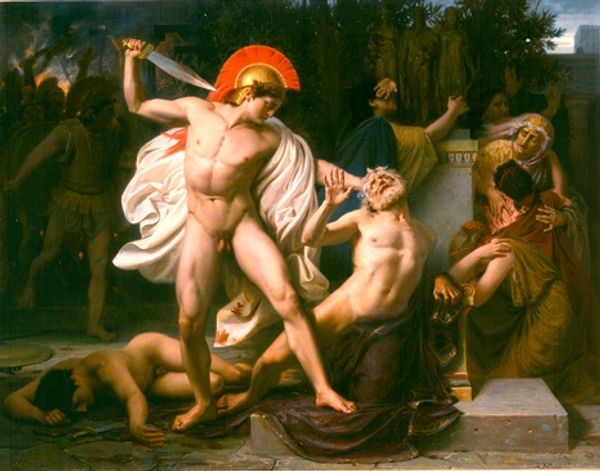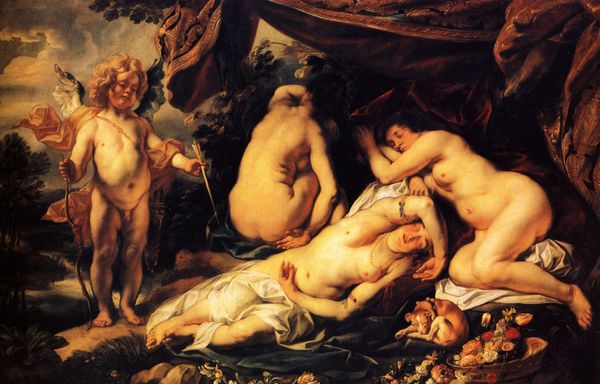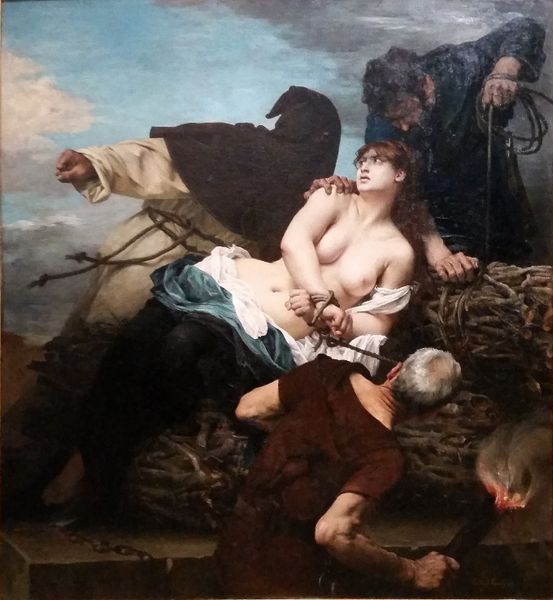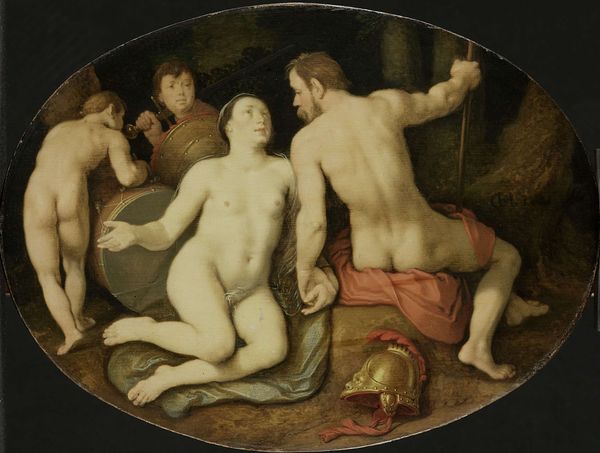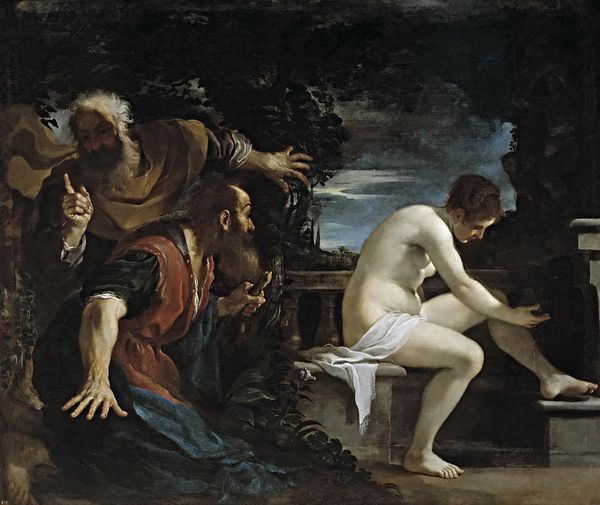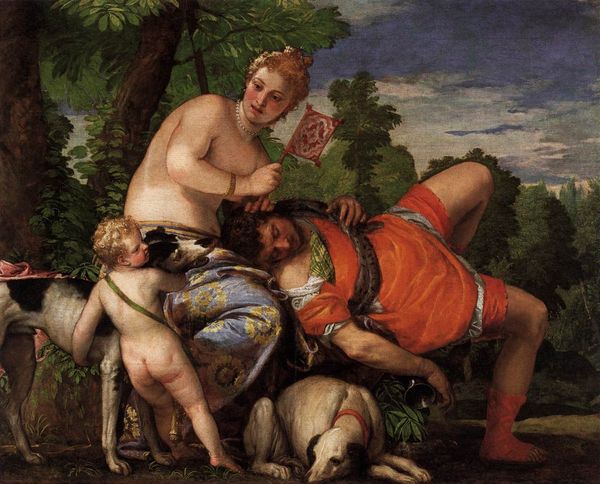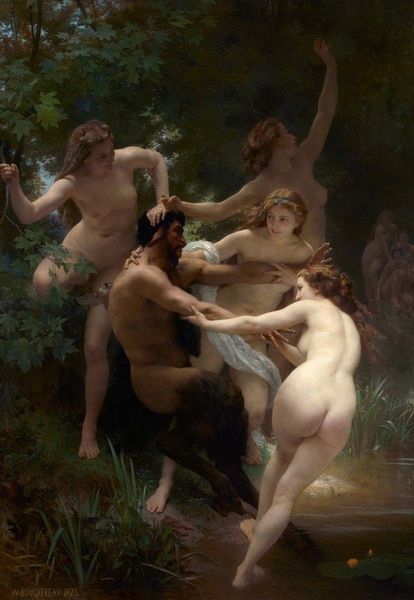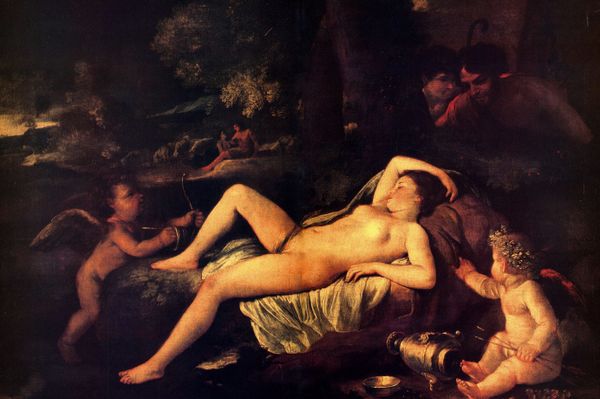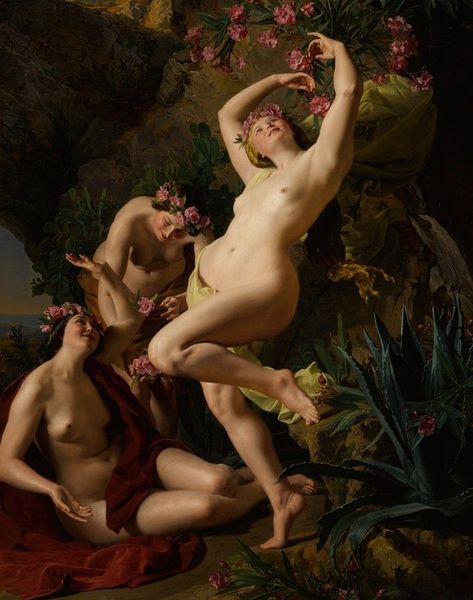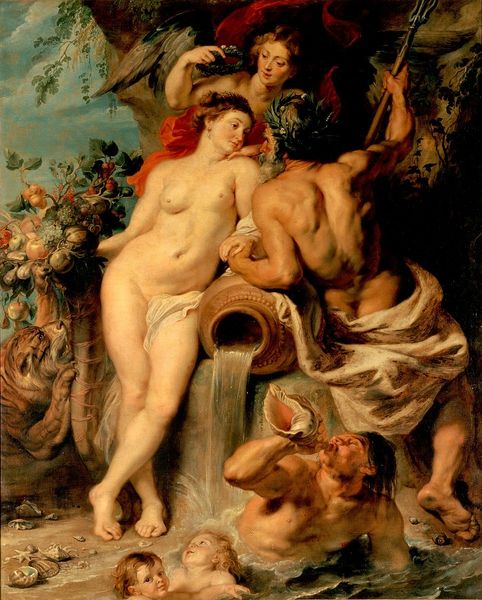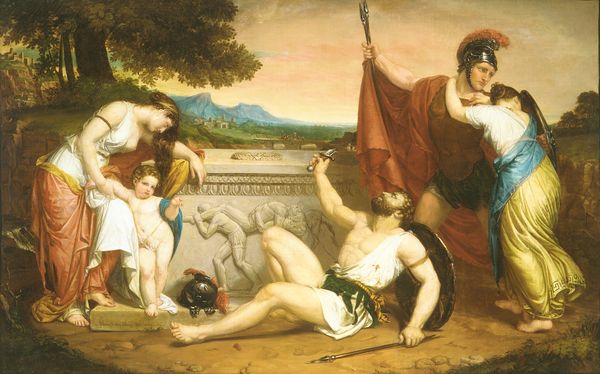
painting, oil-paint
#
allegory
#
baroque
#
painting
#
oil-paint
#
figuration
#
mythology
#
painting painterly
#
italian-renaissance
#
nude
Copyright: Public domain
Curator: Oh, my, this piece by Giovanni Battista Gaulli practically pulses with energy. It feels so immediate and arresting, a whirlwind of motion and light. Editor: We're looking at, "Venere Tenta Di Trattenere Adone Dall'andare a Caccia", an oil painting whose exact date of creation is, alas, unknown. As the title suggests, it illustrates a scene from classical mythology: Venus attempting to dissuade Adonis from going hunting. A dangerous activity that will ultimately lead to his death. Curator: The composition itself is remarkable. Note how the figures are arranged in a dynamic, almost theatrical spiral, drawing the eye upwards from Venus to the cherubs hovering above. Editor: And what's fascinating to me is the cultural context in which a piece like this would have been created and displayed. Representations of mythological narratives were a way for wealthy patrons to signal their education and sophistication. These weren’t just pretty pictures; they were statements about status and intellectual leaning. The sensuality would have been considered acceptable as allegories were also useful moral tales Curator: I am struck by Gaulli’s masterful use of light and shadow. The way the light catches Venus’s skin and illuminates Adonis’s determined expression! It creates such a palpable sense of drama. Editor: Certainly. The drama also relies on societal ideas and public values concerning love, loss, mortality, even acceptable behavior between a goddess and a mortal man, which speaks volumes about what art communicated to its audiences. It reflected, reinforced, or sometimes challenged the dominant values of its time. This reminds us of how intertwined art has always been with social, political, and economic forces. Curator: It is quite stunning how he captured the raw emotion in their interaction. It does offer such an insightful narrative of love and desperation that extends across centuries of understanding the arts. Editor: Absolutely. By considering both its form and its function within its historical moment, we gain a far richer appreciation for the enduring power of art. Curator: Indeed. This analysis has certainly enriched my perception of this stunning creation. Editor: For me, seeing it within its social context, its initial meaning is made far more illuminating.
Comments
No comments
Be the first to comment and join the conversation on the ultimate creative platform.
